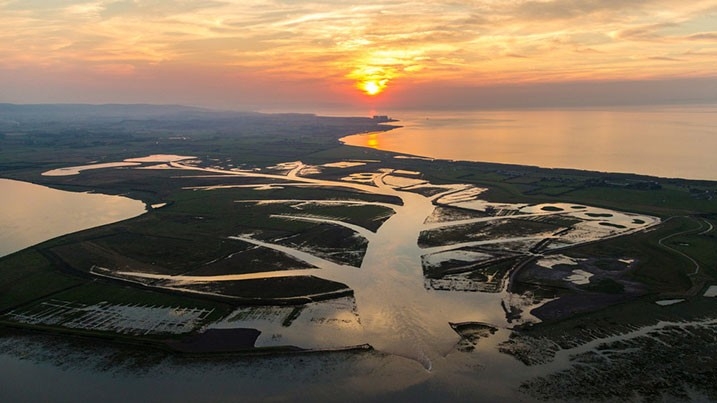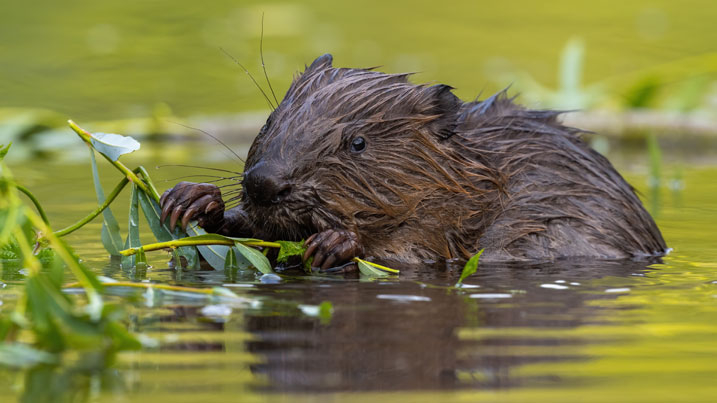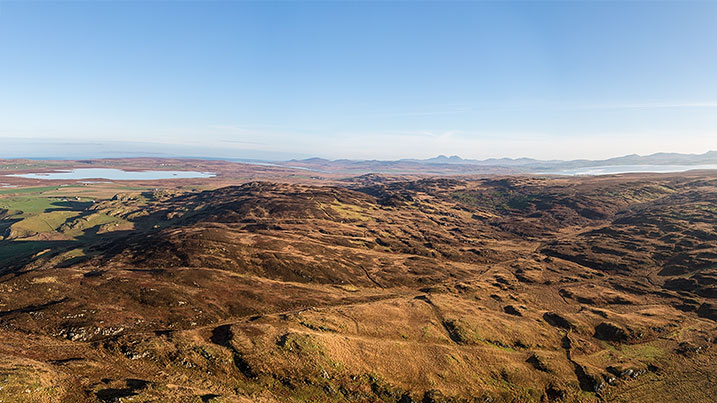How wetlands could help solve the climate change problem

This strong and positive statement from Martha Rojas Urrego, Secretary General of the Ramsar Convention on Wetlands, to mark 2019’s World Wetlands Day with the theme of ‘Wetlands and Climate Change’. Although rainforests have long been viewed as the ‘lungs of the planet’, research shows that we have another natural tool in our arsenal for the fight against climate change: wetlands.
It's not totally straightforward. Although they represent a solution, wetland habitats will be among the first and hardest hit by the effects of climate change. And it’s not just that wetlands will help store carbon; losing or degrading them (such as when we develop on wetlands for agriculture) could actually make the problem worse, releasing carbon into the atmosphere.
So wetlands act as both carbon sinks and sources, depending on how they're treated. To help makes sense of this, we will take a look at some of the main threats to wetlands, and how their full potential as natural carbon sinks can be realised.
Why would wetlands be so badly affected?
The very nature of wetlands habitat is shaped by water and rainfall patterns – the natural fluctuations in water levels are a major reason why wetlands support such a unique and diverse range of species. Although the precise impacts of climate change will be varied around the world, with some areas predicted to get wetter and others drier, the general trend is towards greater uncertainty in rainfall and more extreme events.
Added to this is the impact of temperature itself – even a change of a few degrees could be catastrophic for wetland ecosystems,and in the case of increased temperatures and resultant evaporation many seasonal wetlands may dry out too rapidly to support the species that depend on them.

Climate change could increase habitat fragmentation
As a result, wetlands and wetland ecosystems are likely to change significantly. Many of the species that live in wetlands are heavily tied to water, and as a result they will not be able to move easily with this shifting climate. Even the more mobile species, such as barnacle geese, may not be able to move rapidly enough to cope with the change. Although there may be suitable climatic conditions for them elsewhere, there may not be suitable habitats for them to inhabit there. The spread of invasive species, better adapted to these new conditions, is also likely to be exacerbated by climate change.

Wetlands: a natural solution to climate change
Although they risk being severely impacted by climate change, wetlands are also an important part of the puzzle to protect against the most severe impacts and even the problem itself. WWT’s Director of conservation, Dr. James Robinson, explains:
Most of the world’s soil carbon is held in wetlands, yet these precious habitats are declining at an alarming rate. Over a third of wetlands have disappeared since 1970. The vital services, like climate change mitigation, provided by healthy wetlands far outweigh those of terrestrial ecosystems and we ignore their loss at our peril.
Wetlands act as a natural buffer against the most extreme events, soaking up heavy rainfall and ameliorating water flows to protect against the most extreme floods, as well as storing and releasing water slowly in drier times to protect against the most severe impacts of droughts.
They can also help reduce carbon emissions. Although peatlands, a type of wetland, cover only 3% of the surface area of all land on earth, they contain 550Gt of carbon – twice as much as all of the world’s forest biomass combined. And it's not just stopping wetlands from disappearing - newly created wetlands can do the same job. Steart Marshes, the UK's biggest coastal realignment project, is expected to sequester an average of 615t CO2 equivalent per year.

Losing our wetlands makes things worse
However, there is another side to all this carbon storage: what happens when it’s released?
Wetland loss and degradation is a major concern, as it contributes to global warming by transforming these natural carbon sinks into emission sources,” says Martha. When humans process and drain wetlands, what is stored can then be released. This is starkly shown in the Nordic-Baltic peatlands, where the loss of nearly half of this habitat produces approximately a quarter of the region’s annual CO2 emissions.
What WWT is doing to help
James Robinson is clear on how much of a priority this is.
For the sake of the next generation and the future of threatened wildlife, we must act now to halt and reverse the loss of wetlands across the globe. One of the best ways to do this is to enhance the network of protected wetlands and apply economic and financial incentives for the communities and businesses who can help to use them wisely.
- We are working to protect wetlands and the carbon that they store across the UK and around the world, to build resilience to future climate change and its effects.
- In the UK we are actively seeking opportunities to expand our reserves, better connecting the habitats of fragile wetland species. At WWT Slimbridge, the amount of ditches used by water voles went up from just 250m to over 15 kilometres in just four years.
- We are campaigning for a strong environment bill after Brexit.
- We are working to create a greater diversity of habitats, as well as investigating the predicted impacts of climate change on our reserves to help us to manage them better.
- Creating new saltmarsh at WWT Steart Marshes is expected to sequester an average of 615t CO2 equivalent per year.
- Beyond our reserves, we consult on initiatives to create wetland habitats to compensate for loss elsewhere and help better cope with future climate change – such as on the Steart Peninsula.
- Internationally, projects such as those in Madagascar, Cambodia and Sri Lanka are working to diversify local livelihood options, such as ecotourism.to ensure that local communities are better able to adapt to future change.
- WWT Consulting have produced a guidance handbook on integrating urban development and wetland conservation for policy makers, planners and developers
How you can help
- Become a member of WWT and help us fight climate change
- Add water to your garden by putting in a mini-wetland or pond, and go peat-free
- Visit one our reserves
-
In this section
- Unsustainable Development
- Pollution and wetlands
- Invasive species and wetlands
- Climate change and wetlands